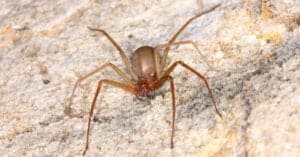Colorado is a nature lover’s dream with plenty of outdoor spaces to enjoy, including forests, canyons, and mountains. Along with so many great places to visit for hiking, skiing, fishing, or camping, the state is home to plenty of wildlife. Bison live at the Rocky Mountain Wildlife Refuge, wild horses roam Sand Wash Basin, and bighorn sheep inhabit Rocky Mountain National Park. But there are also smaller, often unseen creatures that roam closer to humans, nesting in yards, gardens, and basements. Several spider species reside in Colorado, but below, we focus specifically on brown spiders.
1. Funnel Weaver
Scientific Name: Agelenidae
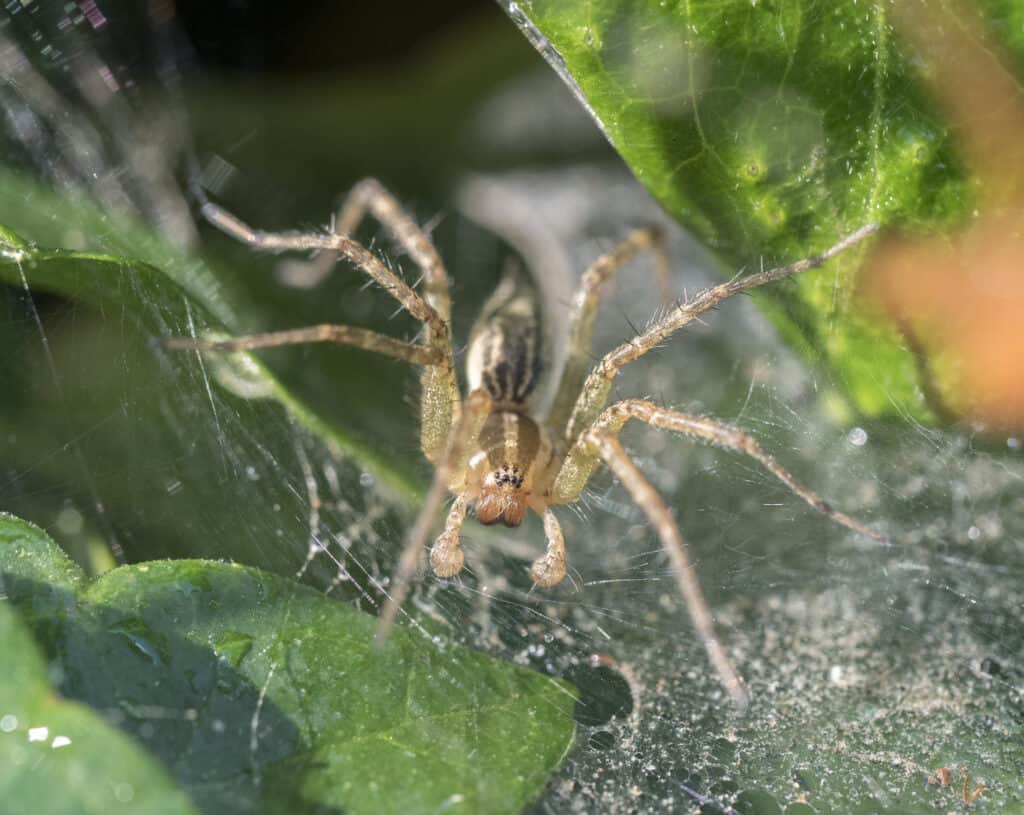
They seek out dense environments, like lawns and shrubs and may often make their way inside to prepare a web in the corner of a home.
©iStock.com/johnandersonphoto
Funnel weavers are common in Colorado and their name is apt, seeing as they construct dense webs with a funneled area where they can hide out and rest. They seek out dense environments, like lawns and shrubs and may often make their way inside to prepare a web in the corner of a home. Their bodies are brown and hairy, they have bands on their legs, and they only have four eyes. Males are usually spotted around the end of summer and the start of fall. Most of the time, these mature males are looking for a mate. Male funnel weavers have pedipalps that protrude from their heads — at first glance, you may mistake them for fangs. However, they use these structures for transmitting sperm.
2. Cellar Spider
Scientific Name: Pholcidae
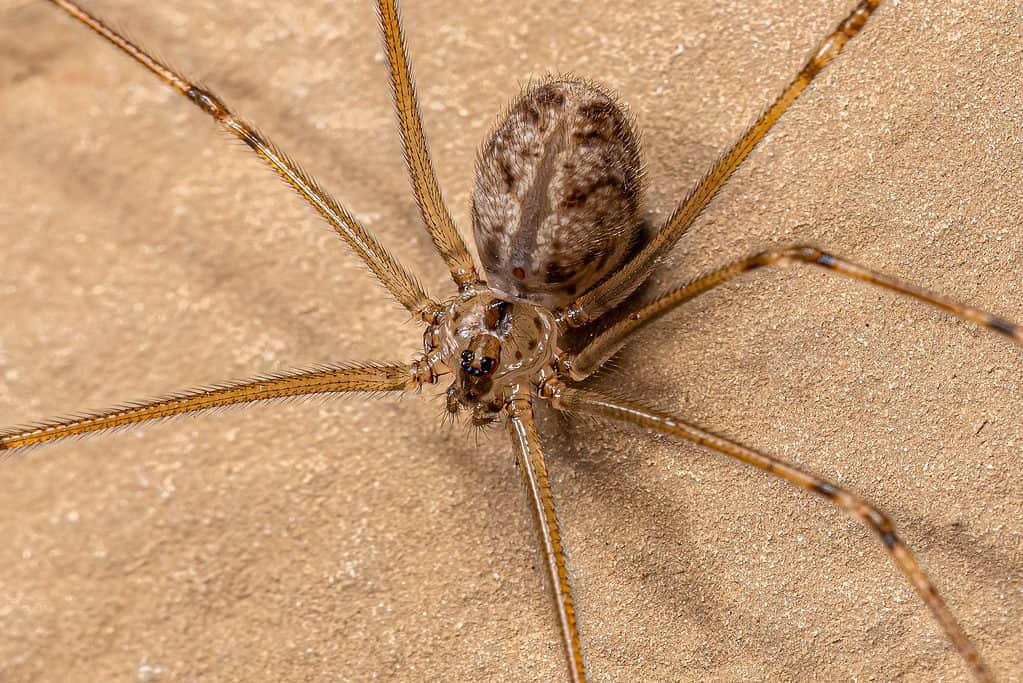
Their eyes cluster into groups of three on either side of their heads, with a pair right in the center.
©Vinicius R. Souza/Shutterstock.com
Cellar spiders have distinct long, skinny legs. They’re often referred to as ‘daddy longlegs.’ However, this term also refers to opilionids (these daddy longlegs are not spiders). Cellar spiders thrive in dark environments, often opting for places like basements to call home. They create their webs, which they rest in upside down. They’re peculiar and respond in two distinct ways when they’re perturbed. One method they use is a bouncing motion to vibrate their web. Another method is to stay still and tiny, hoping to go unnoticed. Along with their long, skinny legs, you can identify cellar spiders by their long brown bodies (always longer than they are wide) and their eyes, which cluster into groups of three on either side of their heads, with a pair right in the center.
3. Woodlouse Hunter
Scientific Name: Dysderidae
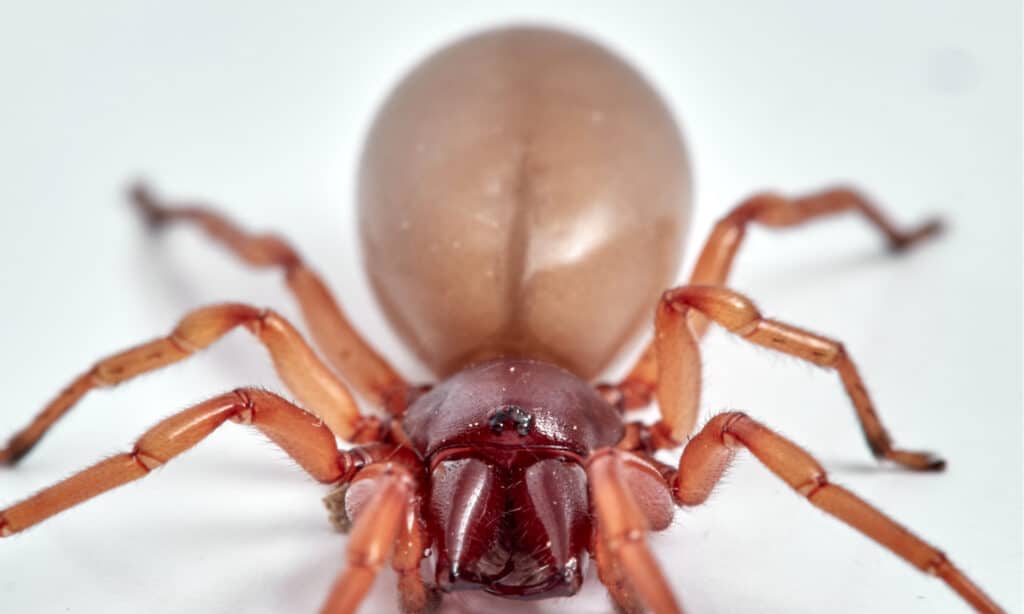
Their bodies are more of a caramel brown or tan color, contrasting their heads and legs, which carry the reddish tone.
©Macronatura.es/Shutterstock.com
Woodlouse hunters are usually basement dweller. But they are sometimes spotted outside, enjoying your garden while settling comfortably under objects like rocks. Their snacks include roly polies, beetles, and millipedes. Right in the center of their reddish-brown heads they have three pairs of eyes. Their bodies are more of a caramel brown or tan color, contrasting their heads and legs, which carry the reddish tone. They have substantial jaws and lengthy fangs and unlike other spiders, they don’t build webs. Female woodlouse hunters use their silk to create tiny sacs to keep their eggs safe. Their spiderlings often stick around for an entire year, remaining close to their spider mama before ‘moving out’.
4. Running Crab Spider
Scientific Name: Philodromidae

These spiders move quickly, which helps them get away from predators with ease.
©Vinicius R. Souza/Shutterstock.com
Running crab spiders prey on insects. They usually live among plants, engaging in their hunting behavior, but every once in a while, you might spot one indoors. They have round bellies, and their front two leg pairs are longer than the four legs in the back. They’re brown but not uniformly so, as some have dark markings (typically on their abdomens), while others don’t.
On their faces, they have two rows of eyes with a total of four pairs (two pairs on top and two pairs on the bottom). These spiders move quickly, which helps them get away from predators with ease. Since they actively hunt, they don’t spin webs to catch their prey. They use their speed and agility to chase insects down, before biting them to inject venom. Their speed alone is intimidating so it’s a comfort to arachnophobes that these spiders are quite tiny, with females growing only as long as 3/8 inches.
5. Wolf Spider
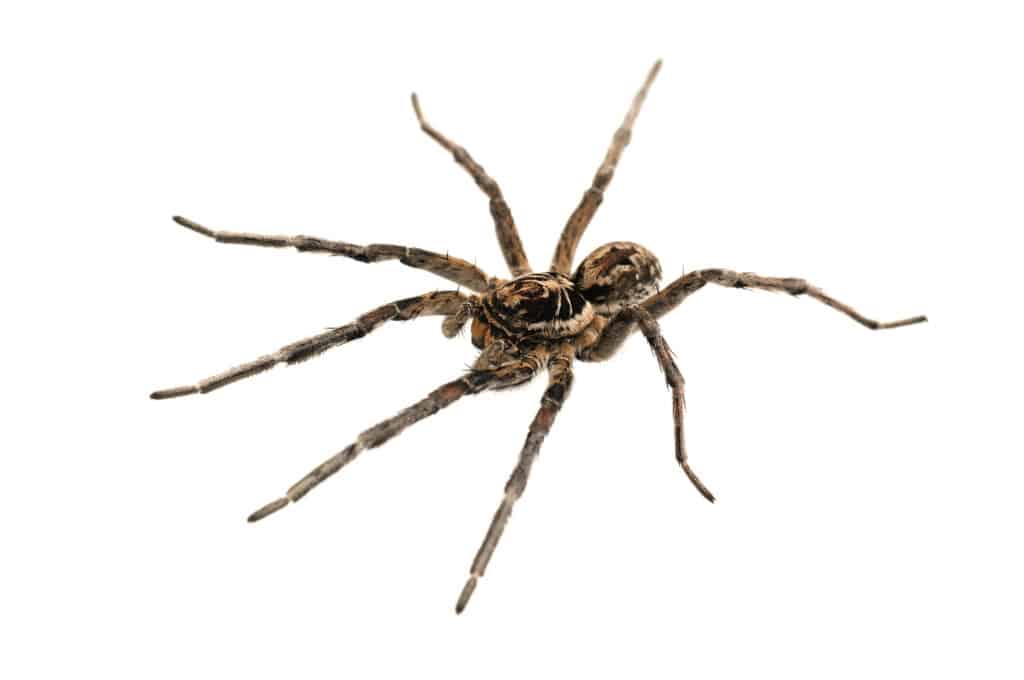
They’re often confused for tarantulas and can certainly scare the bejesus out of you if they catch you off guard!
©D. Kucharski K. Kucharska/Shutterstock.com
Scientific Name: Lycosidae
This is another common spider in Colorado you’re likely to spot outside in your garden. Like other hunting spiders in this list, wolf spiders don’t spin webs to capture prey. Instead, they use their strength to overpower and kill insects. They are a dull light brown with some darker markings throughout their bodies, including their legs. They have four pairs of eyes — the pairs on the top of their heads are significantly bigger than the ones on the lower part of their face. Their bodies are hairy, and their bellies are long versus wide. After females mate, they produce an egg sac and carry it at the tip of their abdomens. These spiders can grow over 1 ½ inches in length, with some of them growing legs that stretch out to 3 inches. They’re often confused for tarantulas and certainly scare the bejesus out of unsuspecting gardeners.
Thank you for reading! Have some feedback for us? Contact the AZ Animals editorial team.







